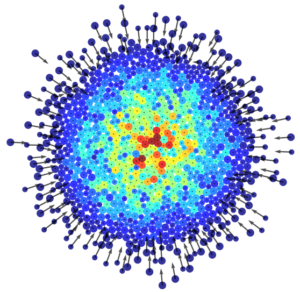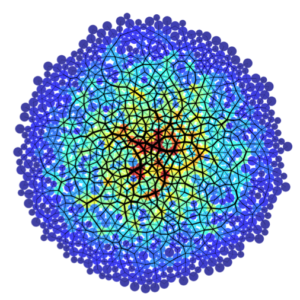Manning Group Participants:
Julia Giannini
Ethan Stanifer
When large groups of people gather at high densities, regions of localized pressure or motility can arise which result in physical injury or fatality to individuals from crushing, trampling, or other phenomena. Previous work addressing crowd dynamics has used trajectory analysis of Self Propelled Particle models to identify Goldstone modes and soft spots in dense crowds. This analysis requires particle tracking and history information in order to develop predictions for crowd behavior. To address this issue, we compare a simulation of self propelled particles with a novel approximation that accounts for active forces, but is static. We can then study this static model using techniques from the analysis of granular materials, to understand how local structure affects group behavior. This may allow us to identify pressure gradients and soft modes from a single snapshot that could be relevant in real human crowd systems with the goal of predicting and preventing dangerous emergent collective motion.


